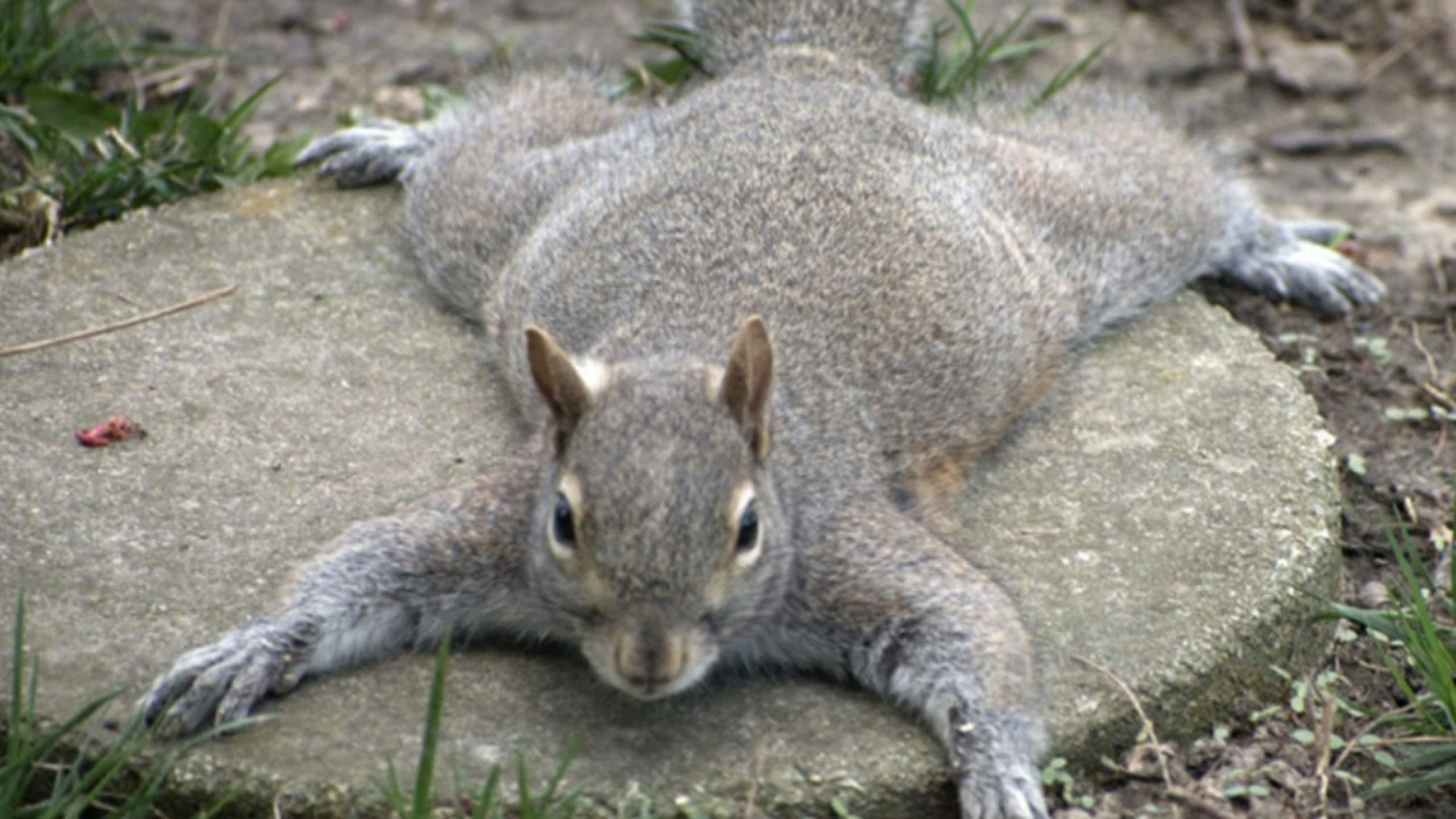By Joshua Wood, tourism/business reporter
josh@cowboystatedaily.com
The topic of splooting squirrels became a national story last week when the New York Department of Parks and Recreation discussed the topic on Twitter.
It seems most people don’t know what splooting is and the many, many media organizations that covered the topic did not seem to know that the world’s foremost expert on squirrels works at the University of Wyoming.
In fact, that expert, John Koprowski, serves as the Dean of the Haub School of Environment and Natural Resources.
So if anyone can explain the topic of splooting squirrels with authority, it’s Koprowski.
What Is Splooting?
So, what exactly is splooting? And why do squirrels do it?
Koprowski told Cowboy State Daily on Monday that splooting is when a squirrel will splay itself out on a cool patch of ground, a sidewalk, in damp dirt or a shallow puddle because it’s hot.
Koprowski said said squirrels are doing what is known as “heat dumping.” Every squirrel, regardless of geographical location, does this.
“As someone who has, through 30 years of doing research, spent way too much time watching squirrels, every squirrel species I’ve ever seen does this,” said Koprowski. “They do this in natural areas as well as urban areas.”
Squirrels in more urban areas might do it more, due to how metropolitan areas retain heat because of asphalt and cement.
But even in the chillier climes like Laramie, squirrels will sploot on warmer days. The upside to what Koprowski called heat islands is that cement sidewalks, while also retaining heat, will retain cooler temperatures while in the shade.
“Just like how we (humans) would jump into a pool to cool off. Effectively, it’s the same thing,” Koprowski said. “They put the tail straight up in the air and that’s the real thing that loses heat for squirrels. At the base of the tail, they’ve got a bundle of blood vessels that run right up next to each other. So the hot blood coming from the body is going out and they’ve got cooler blood coming back.”
Having ways to dump the heat is nothing new for animals, either modern or ancient. The gigantic ears of the jackrabbit—which are great for hearing—are used for heat dumping in the summer, Koprowski said. It is also been thought the purpose of the Stegosaurus’ plates were to help regulate body heat as well.
As helpful as those mechanisms are during the summer, they can be equally harmful in the winter when the temperatures drop, he said.
Though squirrels have always splooted, Koprowski said people may be noticing now due to the recent heatwaves in the eastern United States.
“On hot days people are noticing it more as a result because the squirrels do need to dump heat more, because it’s hotter and they’re in the heavily concreted, heat island of the city,” the professor said.
Koprowski Knowledge
This isn’t the first time Cowboy State Daily has turned to Koprowski to answer life’s mysteries.
Last year, there was concern by some that gigantic cat-sized flying squirrels found in the Himalayas might relocate to the U.S. similar to the hysteria over murder hornets setting up shop over here.
There were those who said the elevation in parts of Wyoming might lend itself to gigantic cat-sized flying squirrels.
Koprowski doused that rumor quickly.
He said the wooly flying squirrels are used to surviving at high elevations at around 16,000 feet and would probably struggle physiologically at lower elevations.





